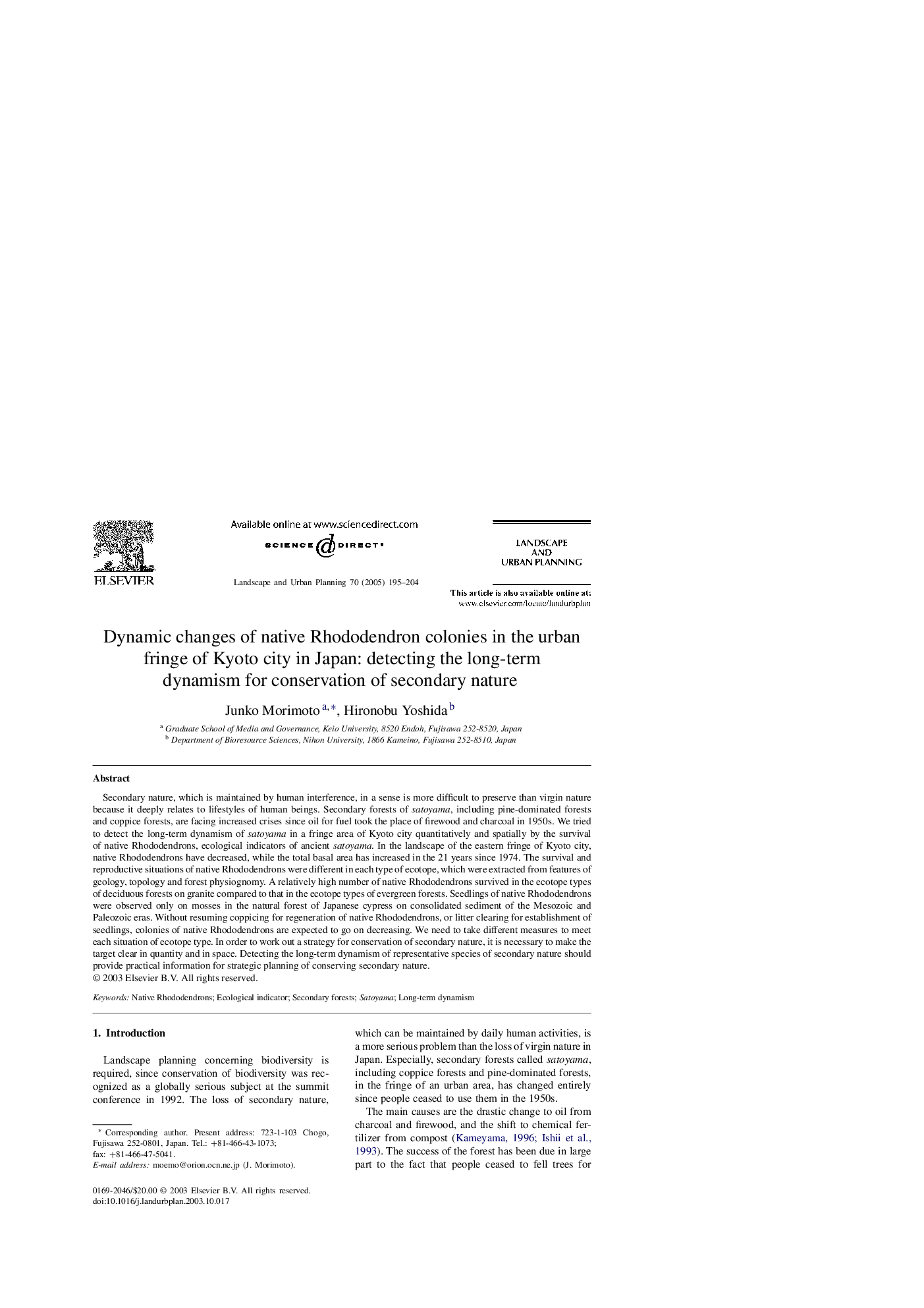| کد مقاله | کد نشریه | سال انتشار | مقاله انگلیسی | نسخه تمام متن |
|---|---|---|---|---|
| 9736106 | 1484684 | 2005 | 10 صفحه PDF | دانلود رایگان |
عنوان انگلیسی مقاله ISI
Dynamic changes of native Rhododendron colonies in the urban fringe of Kyoto city in Japan: detecting the long-term dynamism for conservation of secondary nature
دانلود مقاله + سفارش ترجمه
دانلود مقاله ISI انگلیسی
رایگان برای ایرانیان
کلمات کلیدی
موضوعات مرتبط
علوم زیستی و بیوفناوری
علوم کشاورزی و بیولوژیک
بوم شناسی، تکامل، رفتار و سامانه شناسی
پیش نمایش صفحه اول مقاله

چکیده انگلیسی
Secondary nature, which is maintained by human interference, in a sense is more difficult to preserve than virgin nature because it deeply relates to lifestyles of human beings. Secondary forests of satoyama, including pine-dominated forests and coppice forests, are facing increased crises since oil for fuel took the place of firewood and charcoal in 1950s. We tried to detect the long-term dynamism of satoyama in a fringe area of Kyoto city quantitatively and spatially by the survival of native Rhododendrons, ecological indicators of ancient satoyama. In the landscape of the eastern fringe of Kyoto city, native Rhododendrons have decreased, while the total basal area has increased in the 21 years since 1974. The survival and reproductive situations of native Rhododendrons were different in each type of ecotope, which were extracted from features of geology, topology and forest physiognomy. A relatively high number of native Rhododendrons survived in the ecotope types of deciduous forests on granite compared to that in the ecotope types of evergreen forests. Seedlings of native Rhododendrons were observed only on mosses in the natural forest of Japanese cypress on consolidated sediment of the Mesozoic and Paleozoic eras. Without resuming coppicing for regeneration of native Rhododendrons, or litter clearing for establishment of seedlings, colonies of native Rhododendrons are expected to go on decreasing. We need to take different measures to meet each situation of ecotope type. In order to work out a strategy for conservation of secondary nature, it is necessary to make the target clear in quantity and in space. Detecting the long-term dynamism of representative species of secondary nature should provide practical information for strategic planning of conserving secondary nature.
ناشر
Database: Elsevier - ScienceDirect (ساینس دایرکت)
Journal: Landscape and Urban Planning - Volume 70, Issues 3â4, 15 February 2005, Pages 195-204
Journal: Landscape and Urban Planning - Volume 70, Issues 3â4, 15 February 2005, Pages 195-204
نویسندگان
Junko Morimoto, Hironobu Yoshida,